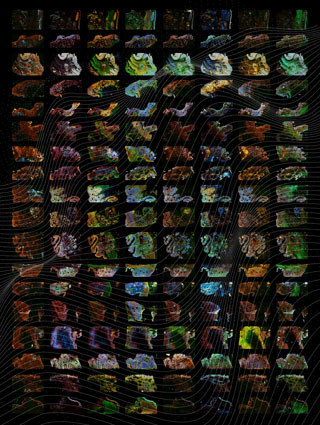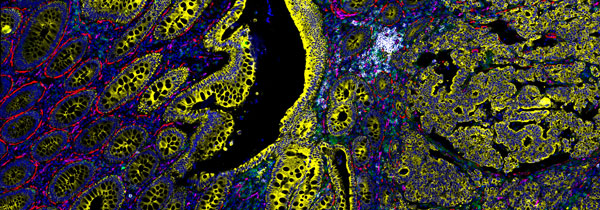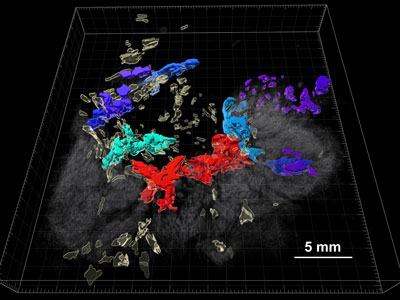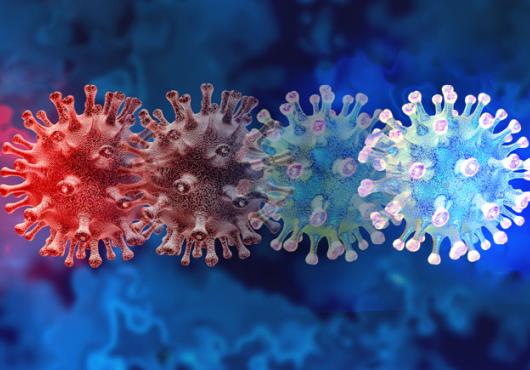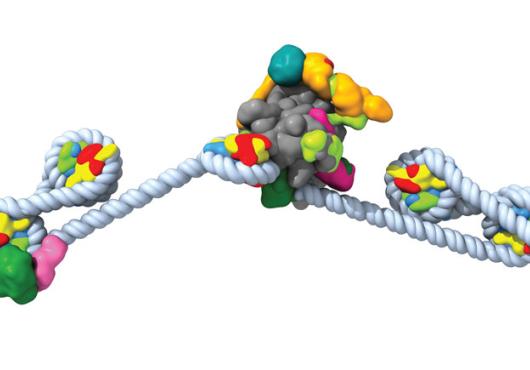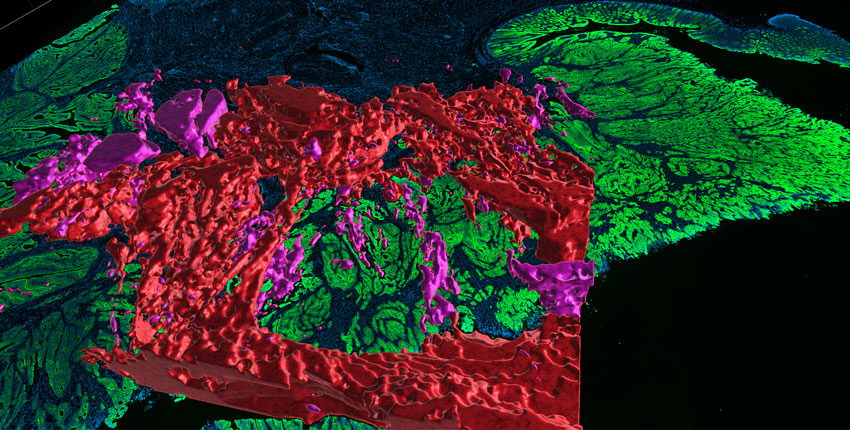
In the United States, turning 45 brings with it a rather unpleasant rite of passage: the beginning of regular colonoscopies, in which an endoscope equipped with a light and a camera is used to visually check the colon for signs of cancer.
Relatively slow-growing, colorectal cancer can often be treated surgically if caught early. However, it becomes more difficult to treat the longer it lurks undetected, making it the fourth leading cause of cancer-related deaths in the country.
Despite the availability of this highly visual screening process, treatment decisions for individual patients are still largely guided by traditional histology — pathologists assess colorectal cancer by examining slides of tumor samples under a microscope.
Now, a team at Harvard Medical School has combined histology with cutting-edge single-cell imaging technologies to create large-scale 2D and 3D spatial maps of colorectal cancer. The maps, described in Cell, layer extensive molecular information on top of histological features to provide new information about the structure of the cancer, as well as how it forms, progresses, and interacts with the immune system.
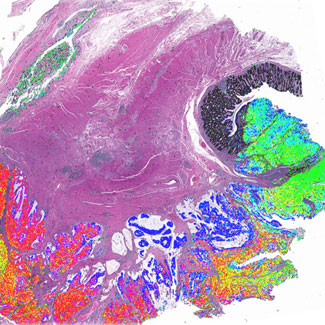
“Our approach provides a molecular window into 150 years of diagnostic pathology — and reveals that many of the elements and structures traditionally thought to be isolated are actually interconnected in unexpected ways,” said co-senior author Peter Sorger, the Otto Krayer Professor of Systems Pharmacology in the Blavatnik Institute at HMS.
“An analogy is that before we were just looking at the tail or the foot of the elephant, but now, for the first time, we can start to see the whole elephant at once,” he said.
The maps are part of the team’s broader efforts to create atlases for different cancer types that will be freely available to the scientific community as part of the National Cancer Institute’s Human Tumor Atlas Network.
Previously, the researchers used a similar approach to create in-depth maps of early-stage melanoma, and maps for other cancers are already in development. Ultimately, the team hopes that these cancer atlases will propel research and improve diagnosis and treatment.
Combining old and new
Histology has long been the cornerstone of cancer diagnosis and treatment: Pathologists examine a tumor sample stained with hematoxylin and eosin (H&E) under a microscope and pick out key features to determine the grade and stage of the cancer.
This information is used by oncologists to develop a treatment plan, which usually involves some combination of surgery, drugs, and radiation. H&E-based histology is relatively simple, cheap, fast, and can reveal a lot about a tumor.
Science. Medicine. Humanity.
Harvard Medicine magazine delivered to your inbox
